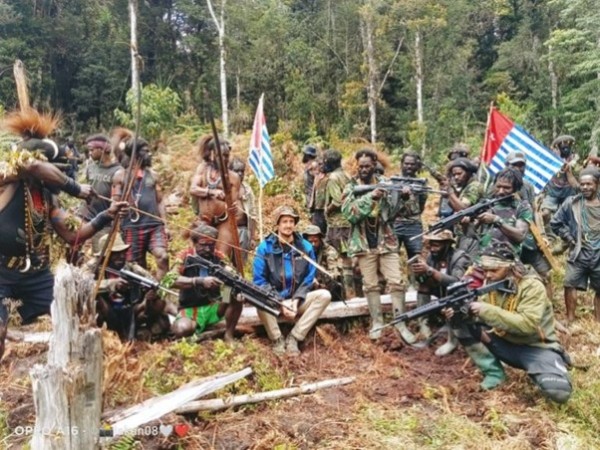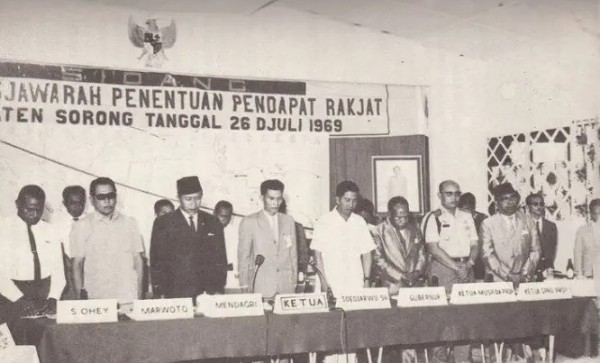The long-running conflict in West Papua has slipped from the headlines in recent times as other regional issues took precedence in many newsrooms. But this week it's back on the news agenda - so what’s going on there?
Separatists in Indonesia’s Papua region say they have killed nine Indonesian soldiers in an ambush, as the Indonesian military (the TNI) continues to search for kidnapped New Zealand pilot Philip Mehrtens.
Mehrtens was detained by members of the West Papua National Liberation Army after he landed at an isolated airstrip in Nduga district in February.
The plane, carrying five passengers, was scheduled to pick up 15 construction workers building a health centre in the small town of Paro, after a group of separatist rebels reportedly threatened to kill them.
The plan to evacuate the workers angered the rebels, who responded by setting fire to the plane, and seizing the pilot.
Shortly afterwards two battalions of the Jakarta-based Unit 81 counter-terrorism squad were sent to Timika, a city on Papua’s south coast. Unit 81 has traditionally been the military group which spearheads operations against rebel groups throughout the country.

A man identified as Phillip Mehrtens poses with his well-armed captors in West Papua. / Image: West Papua National Liberation Army.
Indonesian military spokesman Julius Widjojono said soldiers were searching at a number of sites, and despite weather problems they believe they are close to finding the pilot.
The West Papua National Liberation Army has previously demanded that Indonesia recognise Papuan independence in return for the pilot’s release.
They are also demanding a face-to-face meeting with Indonesian President Joko Widodo, to discuss concerns over the continued presence of the Indonesian Army in the troubled province.
“The United Nations and the New Zealand government have an obligation to push Indonesia to stop the military operation,” rebel spokesman Sebby Sambom has said. Top of Form
Other demands include more arms and ammunition, along with a $US5 million ransom for the kidnapped Kiwi.
Background
When Indonesia gained its independence from the Netherlands in 1949, the Dutch government retained control over the territory of West New Guinea. From 1949 until 1961 the Indonesian government sought to "recover" West New Guinea (later known as West Irian or West Papua), arguing that the territory, a part of the former Netherlands East Indies, rightfully belonged with Indonesia.
In late 1961, after repeated and unsuccessful attempts to secure its goals through the United Nations, Indonesia's President Sukarno declared a military mobilisation, and threatened to invade West New Guinea. In Washington, the Kennedy administration, fearing that US opposition to Indonesian demands might push the country toward Communism, organised talks between the Netherlands and Indonesia designed to avert military action.
The talks led to the New York Agreement in 1962, which gave Indonesia control of West New Guinea (then renamed West Irian) Jakarta agreed to hold an independence referendum within seven years. Once in control, Indonesia’s security services set about stamping out any calls for independence.
Over six weeks from July to August 1969, the UN oversaw the "Act of Free Choice." Under the New York Agreement all adult Papuans had the right to participate in an act of self-determination to be carried out in accordance with international practice. That did not occur – instead Indonesian authorities selected 1022 West Papuans to vote publicly and unanimously in favour of integration with Indonesia.
Despite significant evidence that Indonesia had failed to meet its international obligations, in November 1969 the United Nations "took note" of the "Act of Free Choice" and its results, thereby lending support of the world body to Indonesia's annexation.
By the time of the vote, the West Papuan nationalist movement was already well established under the leadership of Nicolaas Jouwe and Theys Eluay, who sought to establish an independent state called West Papua.

"Pepera", or the "Act of Free Choice, gave Indonesia control of Papua in 1969/ Image Indo Govt Archives
West Papuan leaders, including Eluay and Moses Werror, declared the establishment of the Free Papua Movement in 1965, which called directly for independence from Indonesia.
The independence movement has continued the struggle for decades, enduring several military crackdowns, with widespread human rights abuses reported on several occasions.
In the 1990s, the West Papua separatist movement underwent a significant transformation, shifting from armed struggle to non-violent resistance. This was due in part to the influence of the international human rights community, which began to shine a light on the abuses taking place in West Papua.
In 1998, Indonesia's President Suharto was forced to resign, and his successor, BJ Habibie, implemented a range of democratic reforms, including granting West Papua a degree of autonomy. However, many West Papuans felt that this was not enough, and in 2000, a group of West Papuan leaders, including Theys Eluay, launched the Papua Presidium Council, which called for independence through peaceful means.
West Papua has had a special autonomous status since 2001. Since June 2022, it has been divided into five provinces.
However, the Indonesian government has been reluctant to grant West Papua full independence, and the region remains one of the poorest and most conflict-ridden in Indonesia.
In recent years, the West Papua separatist movement has gained renewed international attention, with activists calling for a peaceful resolution to the conflict and for greater autonomy for the region.
What’s next ?
Following the rebel ambush three of Indonesia’s most senior military leaders are now in West Papua to evaluate the situation, including the newly installed head of the Indonesian Military (the TNI) commander Admiral Yudo Margono.
The Admiral has previously turned down New Zealand’s offer of assistance in the recovery of the kidnapped pilot. New Zealand Ambassador to Indonesia Kevin Burnett had reportedly offered assistance during a visit to the TNI headquarters in Cilangkap, east of Jakarta.
“He offered to help, but I am still able to complete (the rescue).” Yudo told reporters.
Prior to the offer Indonesian media had reported that New Zealand diplomats had gone to Papua to monitor the negotiation process.
Yudo also told reporters the operation to find and release the kidnapped pilot was a “law enforcement” operation, rather than a military one.
The TNI had pulled out of some highland regions in West Papua last year, hoping to project a softer profile.
Following Mr Mehrtens' kidnapping, the West Papua Liberation Army issued a statement saying they would now target "all foreigners: the US, EU, Australians and New Zealanders".
As spokesman said those countries had supported Indonesia's rule by sending weapons and training soldiers over past decades.
The rebels are also critical of countries in the region ignoring their plight in the long-running conflict, and also for allowing the sham referendum in 1969 to go ahead in the first place.
The TNI says it has now raised its alert level in Papua to "Ground Combat Ready", following the arrival of Indonesia’s top military brass and the subsequent re-assessment of the conflict,
The kidnap of a Kiwi pilot may prove a significant turning point in the West Papua story.
Banner Image : Manokwri Harbour, West Papua / image Axel Drainville
- Asia Media Centre